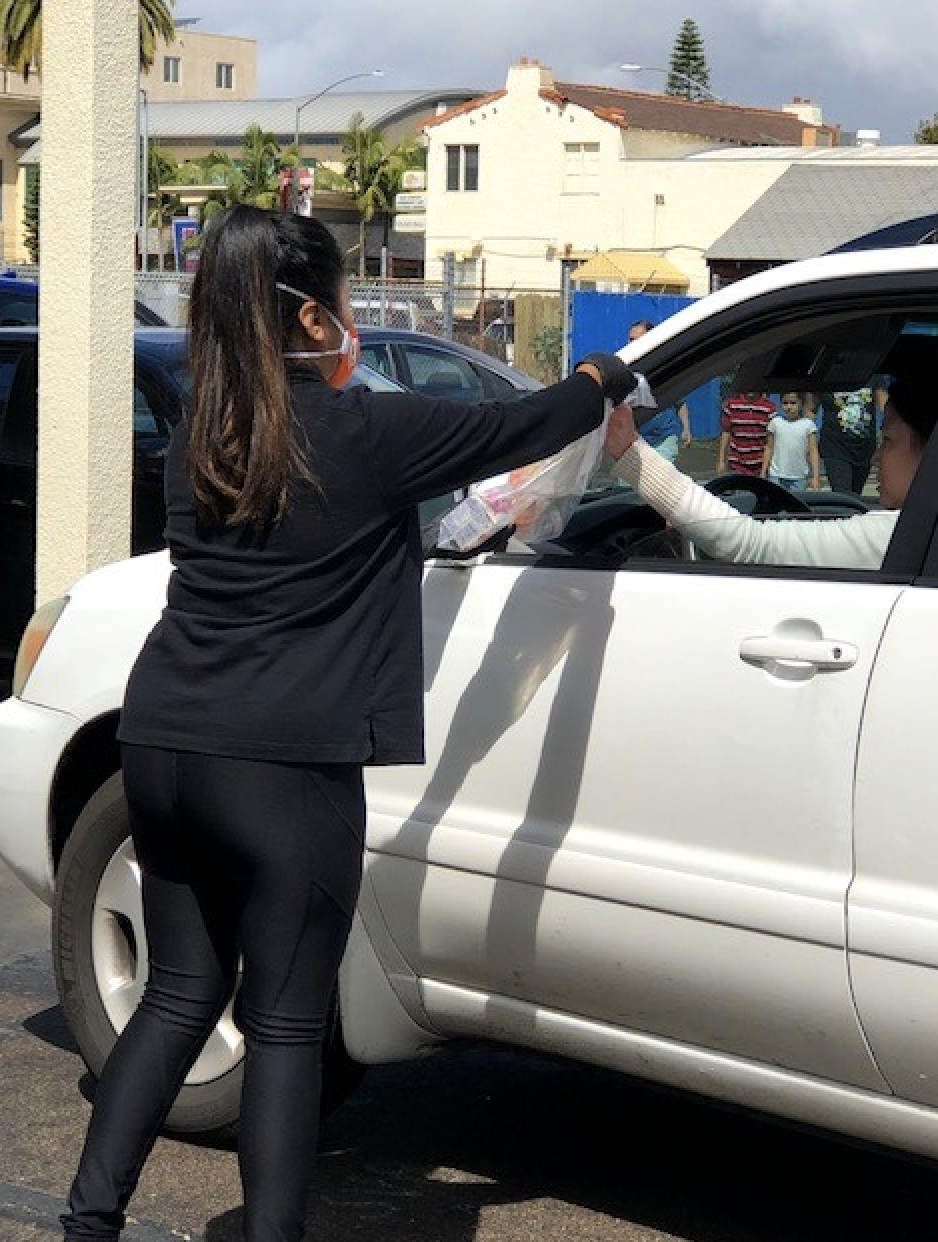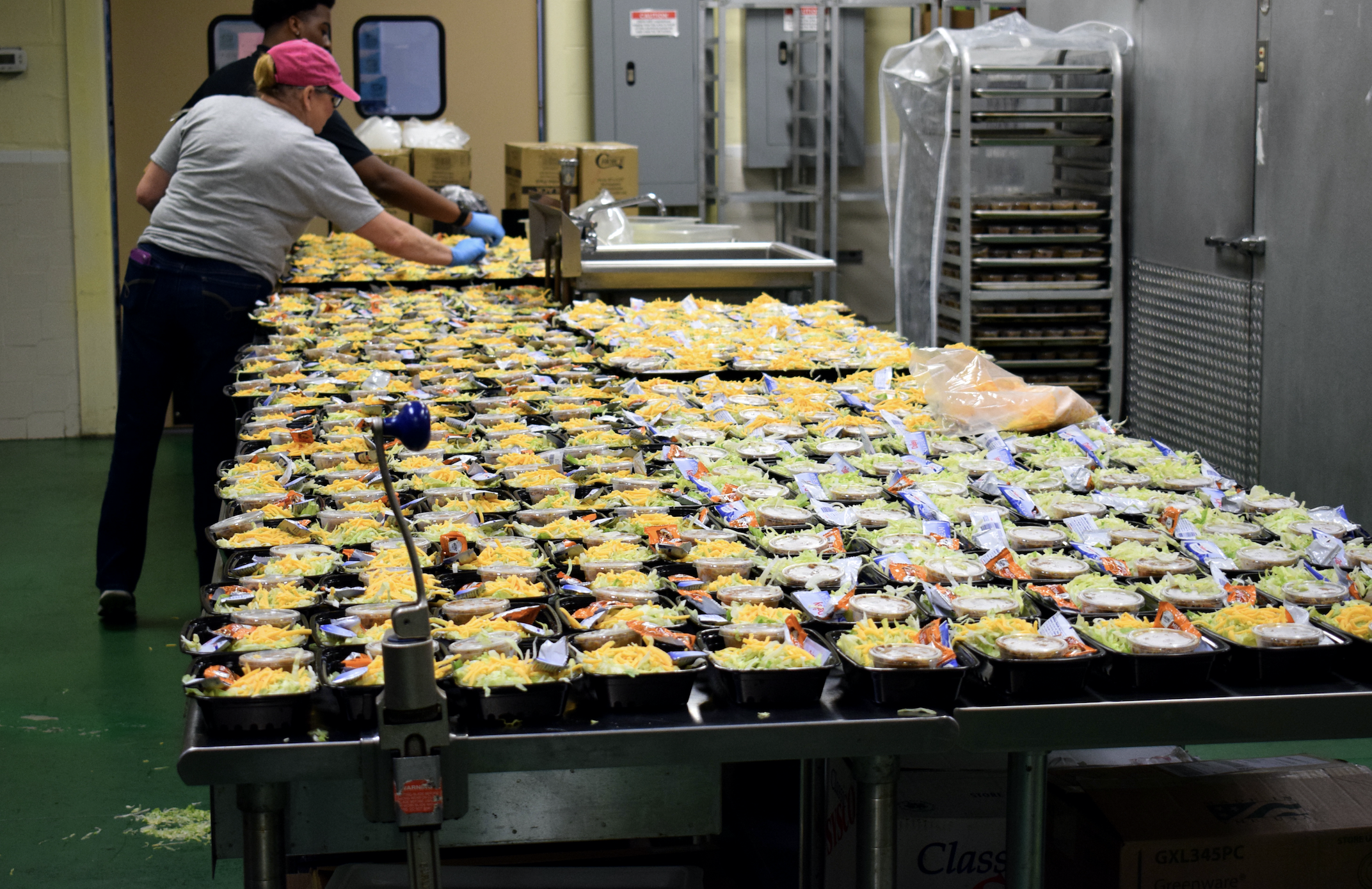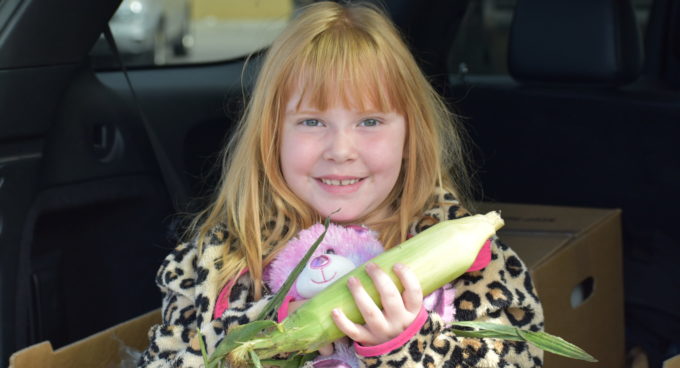Right now, more kids than ever are going to bed with empty bellies. Due to COVID-19, Feeding America estimates that 6.8 million more children will face hunger this year — adding to the over 11 million children already facing hardship with knowing where their next meal will come from.
As schools and community programs prepare for the upcoming school year, it is becoming clearer that most kids will not be in school five days a week with consistent access to school meals — further exacerbating our nation’s growing child hunger crisis. To make sure schools and communities can feed children in need, the Feeding America network, and other anti-hunger advocates, are urging the United States Department of Agriculture (USDA) to further extend child nutrition waivers for the full school year to give providers and families certainty. As lawmakers return from August recess, we are also asking Congress to boost Supplemental Nutrition Assistance Program (SNAP) benefits by 15 percent and extend and strengthen Pandemic EBT (P-EBT).
If lawmakers do not act soon to equip our communities to feed kids as they return to learning, more kids will go through the school year without the fuel needed to succeed. As the ball sits in our lawmakers’ court to take action, food banks continue to be at the helm of ensuring no kid goes hungry. Below, three Feeding America member food banks share how they have adapted to keep kids well-nourished this summer and their next steps to continue to make sure all children have enough to eat.
Feeding San Diego (California)
 The immediate impact of COVID-19 was very apparent for us. We saw all 13 of our Child and Adult Care Food Program (CACFP) sites shut down temporarily in mid-March. Within two weeks, safety measures were put into place and waivers were released by USDA that allowed the sites to resume meal service. By the end of March, we were operating 8 meal sites that transitioned to Summer Food Service Program (SFSP) sites because of the waivers; by mid-April, we were operating 11 transitioned sites. We quickly noticed an increase in need across all sites.
The immediate impact of COVID-19 was very apparent for us. We saw all 13 of our Child and Adult Care Food Program (CACFP) sites shut down temporarily in mid-March. Within two weeks, safety measures were put into place and waivers were released by USDA that allowed the sites to resume meal service. By the end of March, we were operating 8 meal sites that transitioned to Summer Food Service Program (SFSP) sites because of the waivers; by mid-April, we were operating 11 transitioned sites. We quickly noticed an increase in need across all sites.
We are currently serving roughly 10 times more meals than during a typical month in 2019. For example, we served 10,369 meals and snacks in June 2019 compared to 103,047 meals and snacks served in June 2020. Additionally, as of July 14, we added another 12 sites and an estimated 7,000 additional monthly meals to our Summer Food Service Program, bringing our total number of active sites to 23.
A main challenge for us has been dealing with our vendor’s capacity to serve meals. In response, we have brought on a second vendor to service the 12 new sites, and we are discussing the possibility of bringing on a third vendor to service more sites. The paperwork and training that comes with these additions are time-consuming. A key success of our efforts has been adapting to new meal waivers and safety procedures. Also, we have significantly reduced the amount of meal waste across all our sites thanks to the meal waivers and an outstanding group effort from our team and site contacts.
Feeding the Gulf Coast (Florida)
 Feeding the Gulf Coast serves 24 counties spanning the Florida Panhandle, south Alabama, and south Mississippi. Each summer, Feeding the Gulf Coast operates the Summer Meals Program. The program typically kicks off at the end of May, but with schools closing early due to the pandemic, we knew we needed to quickly launch the program to ensure that children could have access to meals. We are partnering with over 150 sites across our service area to provide 8,598 meals daily.
Feeding the Gulf Coast serves 24 counties spanning the Florida Panhandle, south Alabama, and south Mississippi. Each summer, Feeding the Gulf Coast operates the Summer Meals Program. The program typically kicks off at the end of May, but with schools closing early due to the pandemic, we knew we needed to quickly launch the program to ensure that children could have access to meals. We are partnering with over 150 sites across our service area to provide 8,598 meals daily.
Since March 13, around when schools began closing, Feeding the Gulf Coast has provided more than 396,381 nutritious meals for children across our entire service area. Some key successes that the food bank has had while operating the program include quickly transitioning to the Summer Meals Program, receiving programmatic flexibility with state and USDA waivers, receiving support from our state agencies to streamline the transition to the Summer Meals Program and allow flexibility, and building key community and school systems partnerships. The food bank has also had success with operating multiple food distribution programs to provide more food to families; we have distributed Temporary Assistance for Needy Families (TANF) foods and established mobile pantries at Summer Meals Program partner sites.
The challenges we have seen while operating our program include facing difficulties with food sourcing and procurement, navigating new COVID-19 safety protocols, and maintaining consistent seasonal staffing during the pandemic. Feeding the Gulf Coast is anticipating distributing over half a million meals through our Summer Meals Program and over 50,000 pounds of additional food to families through our partner sites.
Second Harvest Food Bank of Northeast Tennessee (Tennessee)
 Our food bank usually runs a three-pronged summer program across 8 counties with 20 traditional sites and around 30-40 mobile sites with teams of workers in vans or on our Lunch Express buses. We serve, on average, around 2,500 kids between the programs in a normal year. We also run Summer Mobile Pantry routes that take food weekly or bi-weekly into neighborhoods. Normally, we serve about 25,000 reimbursable meals and about 40,000- 60,000 pounds of food through our Summer Mobile Pantry Program.
Our food bank usually runs a three-pronged summer program across 8 counties with 20 traditional sites and around 30-40 mobile sites with teams of workers in vans or on our Lunch Express buses. We serve, on average, around 2,500 kids between the programs in a normal year. We also run Summer Mobile Pantry routes that take food weekly or bi-weekly into neighborhoods. Normally, we serve about 25,000 reimbursable meals and about 40,000- 60,000 pounds of food through our Summer Mobile Pantry Program.
Our challenge: feed the increased number of families facing food insecurity safely with less staff and rapidly changing conditions. Our solution: learn from our community. To integrate best practices from those around us, we called everyone, including other program sponsors and school nutrition directors at schools, other programs that had models we wanted to copy, families, teachers, nurses, and agency partners. We left those conversations knowing what the capacity was for other folks doing similar work and what pressure points we needed to work on.
This year, we only recruited 5 extra staff members to run sites when we would normally bring on an extra 10-20 people. Many of our traditional sites shut down and did not reopen. The ones that were able to reopen saw their normal capacity diminish. We ended up with 9 summer sites and 35 summer mobile pantry sites being run out of two specialty vans and two minivans.
To help more families keep food on the table, we have built numerous partnerships, including with school systems. By the end of July we had delivered 650,000 pounds of food to families with children, and we are continuing our partnerships into the new school year due to virtual and hybrid learning to ensure families still have access to the meals they need. Every special distribution we have offered over the past four months has had record-breaking attendance, with 100-650 families showing up to wait in long, hot lines for about 100 pounds of food. For many households, this is the first time they have ever had to ask for assistance.
The non-congregant waiver, parent pick-up waiver, and out-of-time waiver have allowed us to keep our staff safe while serving families through our drive-thru and home delivery models. Having funding for the Farms to Food Banks Program allowed us to get great fresh produce, dairy, and meat boxes out to our families to make healthy meals for their kids. The program got us through while our food supply chain started to stabilize.
This is going to be a long recovery for some families. We need continued support and space for creativity so we can efficiently continue service to the increased number of households with children struggling against food insecurity. Increased SNAP benefits, prolonged access to P-EBT, and continued support for commodity programs and addressing infrastructure needs will help ensure families have one less thing to worry about amid these unprecedented times.



